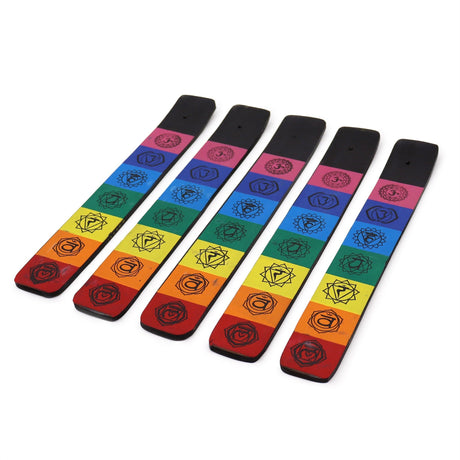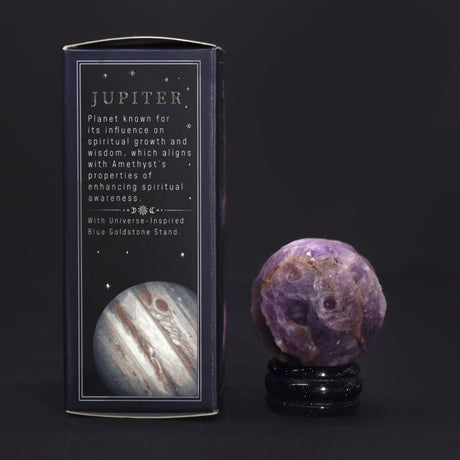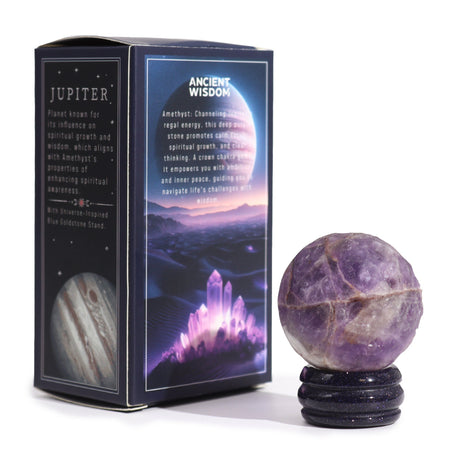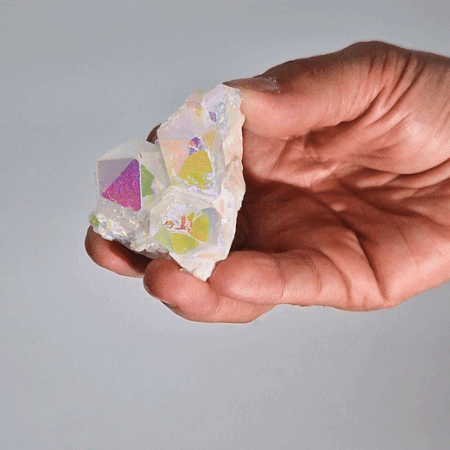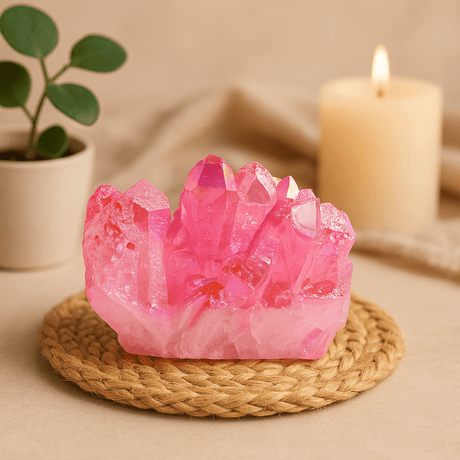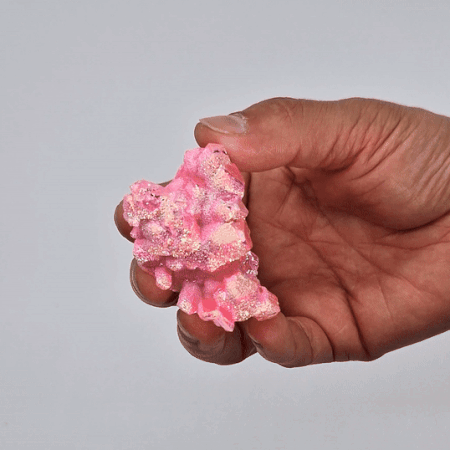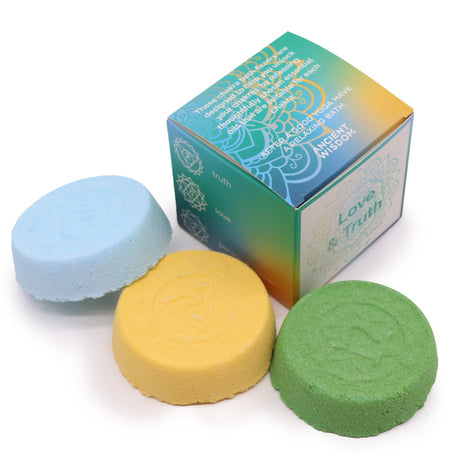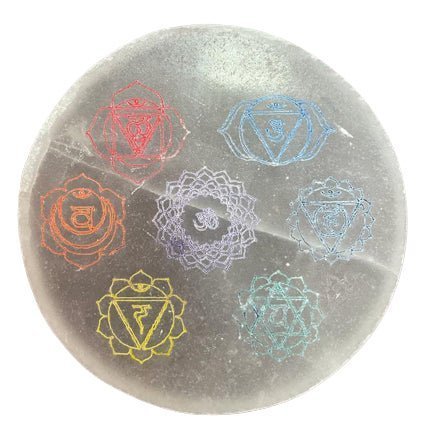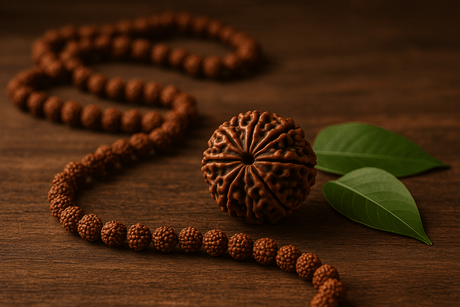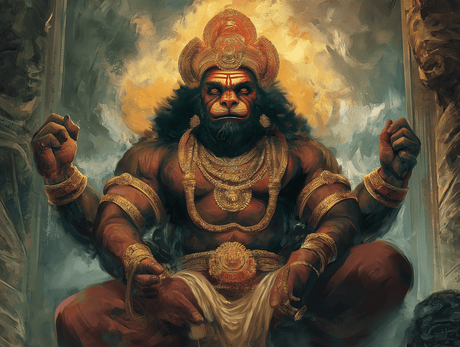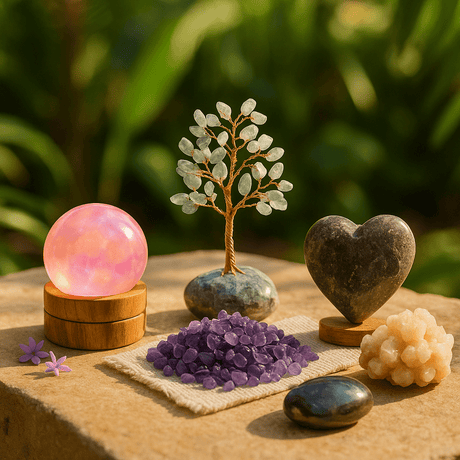Your body contains an astounding 72,000 nadis, which are vital energy channels. Blood flows through veins and arteries, and ancient yogic texts describe these energy pathways differently - with 36,000 channels on each side of your body.
These nadis function like flowing rivers and carry life force energy called Prana throughout your system. Traditional texts hint at even higher numbers, suggesting up to 350,000 channels when counting all subchannels. Your chakras and these energy channels create an intricate web together that shapes your physical, mental, and emotional well-being.
This piece will help you understand nadis, their role in ancient wisdom, and their connection to your overall health. The three primary nadis - Ida, Pingala, and Sushumna - will be explained along with practical ways to keep their energy flowing smoothly.
What Are Nadis: Understanding Energy Channels
The Sanskrit word nadi means "tube," "channel," or "flow." It represents the complex network that carries vital energy throughout our body. These subtle energy pathways are the foundations of distributing prana - the life force that keeps us alive.
Definition and basic concept
Nadis act as invisible energy highways that run alongside our physical nervous system and reach into spiritual and astral dimensions. You won't find these channels in physical form, yet they create defined paths for energy to move through our system. The nadis network maintains the body's energetic balance much like the meridian system in Traditional Chinese Medicine.
Ancient yogic texts reveal a remarkable network of nadis. The Siva Samhita documents about 72,000 pathways. Some traditions believe this number could reach 350,000 when counting all subsidiary channels. Out of these thousands of pathways, fourteen stand out as vital, with three main nadis - Ida, Pingala, and Sushumna - playing significant roles.
Why nadis matter for health
A well-functioning nadi system brings amazing benefits to our overall well-being. Clear and unblocked energy channels support:
- Physical Vitality: Clear nadis boost immune response, improve digestion, enhance circulation, and increase flexibility
- Mental Balance: Balanced energy flow creates emotional stability, reduces anxiety, and helps manage stress
- Spiritual Growth: Balanced nadis, especially the Sushumna nadi, make higher states of consciousness and inner awakening possible
On top of that, these energy pathways directly affect how our body works at many levels. Blockages or imbalances can show up as physical ailments, emotional instability, or spiritual disconnection. The nadis work with our chakras, mainly through the spinal column, where they create important energetic knots called 'granthis'.
Nadis matter because they work beyond the physical realm. These channels bridge our tangible body and subtle energy systems. Yoga asanas, breathing exercises (pranayama), and meditation help us maintain and boost the flow of prana through these vital pathways.
The Ancient Origins of Nadi Science
The science of nadis dates back over 3,000 years, with its first mentions appearing in sacred Hindu texts. The Chandogya Upanishad (8~6 BCE) described these energy channels as pathways to immortality.
Early mentions in yoga texts
The Chandogya Upanishad gives one of the first detailed descriptions of the nadi system. It states: "A hundred and one are the arteries of the heart, one of them leads up to the crown of the head". The medieval text Sat-Cakra-Nirupana (1520s) later brought more refined concepts and referred to the three main nadis as Sasi, Mihira, and Susumna.
Several ancient texts helped shape our understanding of the nadi system:
- The Shandilya Upanishad - Created the concept of fourteen principal nadis
- The Darshana Upanishad - Detailed the relationship between Susumna and surrounding nadis
- The Shiva Samhita - Expanded the understanding to 350,000 nadis
Rise through different traditions
The concept of nadis grew in a variety of cultural and spiritual traditions. The Valluvars, ancient priests of the Pallava Kingdom, preserved this knowledge through palm leaf manuscripts called Olai chuvadi. These manuscripts held detailed information about the nadi system, written by 18 prominent siddhars including Konganar, Kalanki Nadhar, and Agasthiyar.
The understanding of nadis shares similarities with other healing traditions. The Chinese concept of energy meridians carrying 'chi' resembles the yogic understanding of prana flowing through nadis. Thai healing tradition, influenced by the Tibetan physician Shivago Komolaboat, adapted the complex system of 72,000 nadis into ten primary energy lines called Sip Sen.
The British colonial period posed major challenges to preserving this ancient knowledge. Many valuable manuscripts were destroyed, though some royal families and priests protected vital texts. The traditional knowledge lived on through generations of practitioners who understood its deep significance.
Nadi science's rise influenced many spiritual practices. The concept of Triveni sangam - the meeting point of three main nadis at the Ajna chakra - became a powerful metaphor in yogic philosophy. This understanding shapes modern practices of energy healing and spiritual development today.
The Three Main Nadis Explained
The three main nadis - Ida, Pingala, and Sushumna - are the life-blood of our subtle energy system. These vital channels start from a point called Yukta Triveni at the spine's base.
Ida: The moon channel
The Ida nadi, also called the moon channel or chandra nadi, flows up the spine's left side. This cooling energy pathway begins at the root chakra and ends at the left nostril. It controls all mental processes and helps the body and mind relax. Ida embodies yin energy and brings qualities like attentiveness, intuition, and stillness. People who have a freely flowing Ida often experience mental clarity, better intuition, and deeper relaxation.
Pingala: The sun channel
The Pingala nadi, known as the solar channel or surya nadi, runs parallel to Ida on the spine's right side. This dynamic channel moves warming, energizing prana through our system. Its red color and masculine energy help control life processes and give us vitality, efficiency, and strength. A freely flowing Pingala helps practitioners experience natural energy boosts, mental clarity, and better decision-making abilities.
Sushumna: The central channel
The Sushumna nadi is the most important of these three channels and runs straight through the spine's center. It creates a direct path from the root chakra to the head's crown, connecting all seven main chakras along the way. Sushumna stays dormant in most people until Ida and Pingala reach perfect balance.
These three nadis create a fascinating relationship. Ida and Pingala wrap around Sushumna like two serpents and intersect at various energy centers before meeting at the third eye chakra. This beautiful dance of energies serves a deeper purpose - balanced Ida and Pingala activate Sushumna, which can lead to higher awareness and spiritual awakening.
Balanced main nadis bring amazing benefits. They promote inner peace, raise awareness, and unite mind and body. The central energy channel's proper function is vital to maintain overall energy balance.
How Nadis Connect With Your Chakras
Your body's energy system works like a complex highway network. Major roads meet at key junctions that represent chakras - powerful energy centers where multiple nadis join.
The energy center connection
Nadis and chakras create a sophisticated energy distribution system. These energy disks or plexuses serve as meeting points where nadis intersect. They distribute prana through vital centers. The chakras link nadis to five different layers of the body and spread vibrations throughout our being.
Main meeting points
The three main nadis - Ida, Pingala, and Sushumna - start at a point called Yukta Triveni. These channels weave up the spine and create powerful energy junctions. Yukta means "combined" and represents the point where these three vital streams merge.
These energy streams meet again at Mukta Triveni, near the third eye or Ajna Chakra. This joining creates balance between feminine and masculine energies that can lead to spiritual awakening.
Flow patterns between nadis and chakras
Nadis and chakras interact to create specific flow patterns. The Ida and Pingala channels cross, connect, and work with the lower six chakras. This builds a complex network for energy circulation. The results are remarkable:
- Clean nadis help chakras work better
- Balanced flow supports overall vitality
- Free prana movement boosts well-being
- Smooth circulation helps spiritual growth
The energy systems share a dynamic relationship. The prana from three main channels merges at the Mukta Triveni when properly arranged. This creates balance between masculine and feminine energies. The Sushumna nadi brings everything together into a state of balance and stillness.
Our breathing patterns show this connection. Equal airflow through both nostrils signals an active Sushumna nadi. This activation lets prana flow freely through the body and encourages harmony in our system.
Clean nadis make chakras work better. Like clearing a blocked road helps traffic flow, pure nadis remove stuck energy and improve energy balance. This cleaning process helps maintain good energy flow between nadis and chakras. The result supports our physical, mental, and emotional health.
Understanding the 72,000 Nadis System
The nadi network creates a complex energy distribution system that reaches way beyond the three main channels. Ancient yogic texts mention 72,000 nadis, and some traditions suggest this number could go up to 350,000.
Major energy pathways
The nadi system works through a precise hierarchy. These energy channels split equally between the body's left and right sides, with 36,000 nadis on each side. The main channels work like major arteries that distribute blood throughout the body.
Out of these thousands of pathways, fourteen play a special role in the energy system. These principal nadis act as major highways of prana and direct life force to vital areas of the physical and subtle bodies. Each pathway connects to specific organs, glands, and energy centers.
Secondary channels
A vast network of secondary nadis exists beyond the primary pathways. These smaller channels branch out from the main ones and create a detailed web that touches every part of the body. The subtle energy pathways form a complex grid of life force distribution, much like our nervous system extends throughout our physical form.
Secondary channels perform several key functions:
- Collection points for gathering incoming energy
- Purification facilities near glands and organs
- Distribution networks at muscular and skeletal junctions
How they work together
The nadi system works as one integrated network that naturally coordinates with other bodily systems. These channels work in harmony with the physical nervous system, though they exist on a more subtle level. The nadis give energy to our subtle body just as the nervous system powers our physical form.
This big network builds a remarkable framework for prana distribution. Seven distinct layers of hierarchical grid networks make up the system. Through this well-laid-out structure, the nadis make the movement of life force energy easier in pathways that are thousands of years old, creating 72,000 different ways for prana to flow.
These channels balance matches the intricate system found in Traditional Chinese Medicine's meridians. The 12 primary meridians merge with the broader nadi network and support overall energy balance and well-being.
Clear energy flow through all channels determines how well this system works. Purified and unblocked pathways allow smooth circulation of vital energy. This free flow supports optimal functioning at physical, mental, and spiritual levels that promotes complete well-being.
Modern Science and Nadi Theory
Recent scientific research gives us fascinating insights into how ancient cultures understood nadis. Pulse wave velocity studies now show strong evidence that distinct energy pathways exist in our body.
Research findings
Medical investigations now focus on pulse wave analysis, which reveals remarkable links to traditional nadi concepts. Studies show clear variations in pulse parameters at different dosha locations, which validates ancient wisdom. Research proves that pulse wave velocity grows with age and provides measurable data about energy channel functions.
Scientists have found that breathing patterns through different nostrils create measurable effects on the body:
- Left nostril breathing decreases blood pressure
- Right nostril breathing increases blood pressure
- Alternate nostril breathing balances the nervous system
- Skin conductance changes with different breathing patterns
Research using electroencephalograms (EEG) and magnetoencephalography (MEG) shows that breathing through one nostril increases activity in the opposite brain hemisphere. These findings strongly support our traditional understanding of how ida and pingala nadis influence brain function.
Nervous system parallels
Nadis and the nervous system share a deep connection. The central channel, Sushumna, looks structurally like the spinal cord and forms the foundation of our body's energy distribution system. Ida and pingala nadis work similarly to the sympathetic and parasympathetic nervous systems.
Scientists have found that the parasympathetic nervous system, which corresponds to ida nadi, helps the body rest and restore. The sympathetic system, linked to pingala nadi, readies the body for physical and mental activity. This dual nature mirrors what ancient texts say about moon and sun channels.
The autonomic nervous system's split into sympathetic and parasympathetic branches reflects the ancient yogic understanding of energy flow. These components control vital internal functions, just as nadis do in traditional practice.
New research shows that the nervous system sends information through multiple pathways and creates a two-way flow of hormones, neuropeptides, and cytokines. This complex communication network works like the traditional concept of prana flowing through nadis.
Scientists have found that activated immune cells can pass through the blood-brain barrier and release cytokine mediators. This finding matches the ancient idea of energy moving through subtle channels. Lab research with animals and cells shows that low-frequency electromagnetic field therapies change cell function and brain rhythms.
Common Nadi Blockages and Their Effects
Blocked nadis can show up as physical discomfort and emotional challenges in your body. Stress, physical trauma, toxin buildup, or an unhealthy lifestyle often block these energy channels.
Physical symptoms
Your body sends clear signals about blocked nadis. We noticed these signs mostly as muscle tension, especially around your neck, shoulders, and lower back. The symptoms change based on which nadi gets blocked:
-
Left-side (Ida) blockages cause:
- Cold sensations
- Sluggish digestion
- Blocked left nostril
-
Right-side (Pingala) blockages create:
- Excessive body heat
- Dry skin and throat
- Blocked right nostril
These blockages can trigger specific chakra-related physical issues. Root chakra imbalances often result in poor immunity and knee pain. Heart chakra blockages tend to surface as lung or heart-related concerns.
The effects go beyond just local discomfort. Muscle tightness signals energy stagnation and creates pressure points throughout your body. This tension can affect your meditation practice and energy flow over time.
Mental and emotional signs
Nadi blockages have deep psychological effects. Blocked energy channels create various mental and emotional challenges. You might notice these signs:
Tasks become harder to focus on as your mind wanders. You might feel anxious, stressed, or emotionally numb. Processing and expressing emotions becomes a real challenge.
Each major nadi blockage creates its own emotional pattern. A blocked Ida nadi might cause:
- Depression symptoms
- Low mental energy
- Emotional instability
Emotional effects link closely to specific energy centers. Blocked throat chakras make communication difficult. Crown chakra blockages can bring on depression and make you extra sensitive to your surroundings.
These blockages create what yogic traditions call "granthis" or energetic knots. A blocked Brahma granthi at your spine's base brings feelings of insecurity and restlessness. The Vishnu granthi blockage at your heart center often causes emotional pain and relationship problems.
Your nadi condition mirrors your state of mind. Negative thoughts and emotions can overload these delicate energy pathways. This creates a cycle of mental and physical distress. Blocked channels become really obvious during meditation as they keep you from reaching deeper consciousness.
Knowing these symptoms helps catch blockages early. Physical discomfort pairs with emotional turmoil to create complex symptoms that need attention on both levels. You can take the right steps to fix both physical and emotional aspects once you spot these signs.
Simple Practices to Clear Your Nadis
Clearing your nadis needs specific practices that work together to remove energy blockages. These proven techniques help restore optimal prana flow in your subtle energy system.
Breathing exercises
Nadi Shodhana, or alternate nostril breathing, is one of the most powerful techniques to purify your energy channels. This classical technique is called a "perfect cleanser" in the Gheranda Samhita and creates a powerful neutral balance of prana.
Here's how you can practice alternate nostril breathing:
- Sit comfortably with an empty stomach and straight spine
- Use your right thumb for the right nostril and ring finger for the left
- Close right nostril, inhale through left (1 count)
- Hold breath (4 counts)
- Close left nostril, exhale through right (2 counts)
- Inhale through right nostril (1 count)
- Hold breath (4 counts)
- Exhale through left nostril (2 counts)
New practitioners should start with 5-10 minutes. Studies show that a 10-minute practice brings the best results.
Yoga poses
Specific yoga poses activate and clear your nadis along with breathing practices. These poses work best:
Rocking Forward Fold: This pose calms your nervous system and helps energy flow. Place your feet hip-width apart, bend your knees deeply, and rest your belly on your thighs. Clasp opposite elbows and take 3-5 deep breaths.
Empty Coat Sleeves: Stand with feet slightly wider than hip-width. Extend your arms straight out with open palms. Sway side to side, twisting at the waist, letting your arms swing naturally.
Victory Pose: Root down through all four corners of your feet while standing tall. This pose builds a strong foundation for energy flow.
Meditation techniques
Meditation is vital in nadi purification along with breathing and physical practices. These techniques have shown great results:
Visualization Practice: During alternate nostril breathing, imagine light flowing down your spine's side that matches your inhaling nostril. While holding the breath, see the light swirling at your spine's base. As you exhale, visualize the light moving up the opposite side.
Mantra Integration: Mantras make your practice more powerful. You can use:
- "Sat Naam" - Repeat 8 times during inhale, 32 times during hold, and 16 times during exhale
- "Sa Ta Na Ma" - One cycle for inhale, four cycles for hold, two cycles for exhale
These practices create a complete approach to nadi purification. Regular practice helps clear energetic blockages and allows prana to flow freely through your system. Clear nadis can improve your circulation, deepen relaxation, and boost mental clarity.
Consistency matters more than intensity. Begin with short sessions and slowly increase duration as you get comfortable. Practice these techniques on an empty stomach or after a light meal.
Conclusion
The study of nadis reveals the sort of thing I love about our body's subtle energy system. Modern research now backs up what ancient wisdom has long known - these energy channels are crucial to our physical, mental, and spiritual health.
Your nadis' proper care, especially when you have the three main channels - Ida, Pingala, and Sushumna, can lead to increased vitality, better emotional balance, and a deeper spiritual bond. Research supports many traditional teachings about these energy pathways and their impact on our nervous system and overall well-being.
Nadi-clearing techniques like alternate nostril breathing, specific yoga poses, and focused meditation can improve your energy flow. These powerful yet simple methods clear blockages and help restore your system's optimal prana circulation.
Note that working with nadis takes patience and consistency. You should begin with simple practices and watch how your body and mind respond. As you become more aware of these subtle energy pathways, you can expand your practice gradually. This trip toward balanced nadis will create meaningful positive changes in your daily life.








